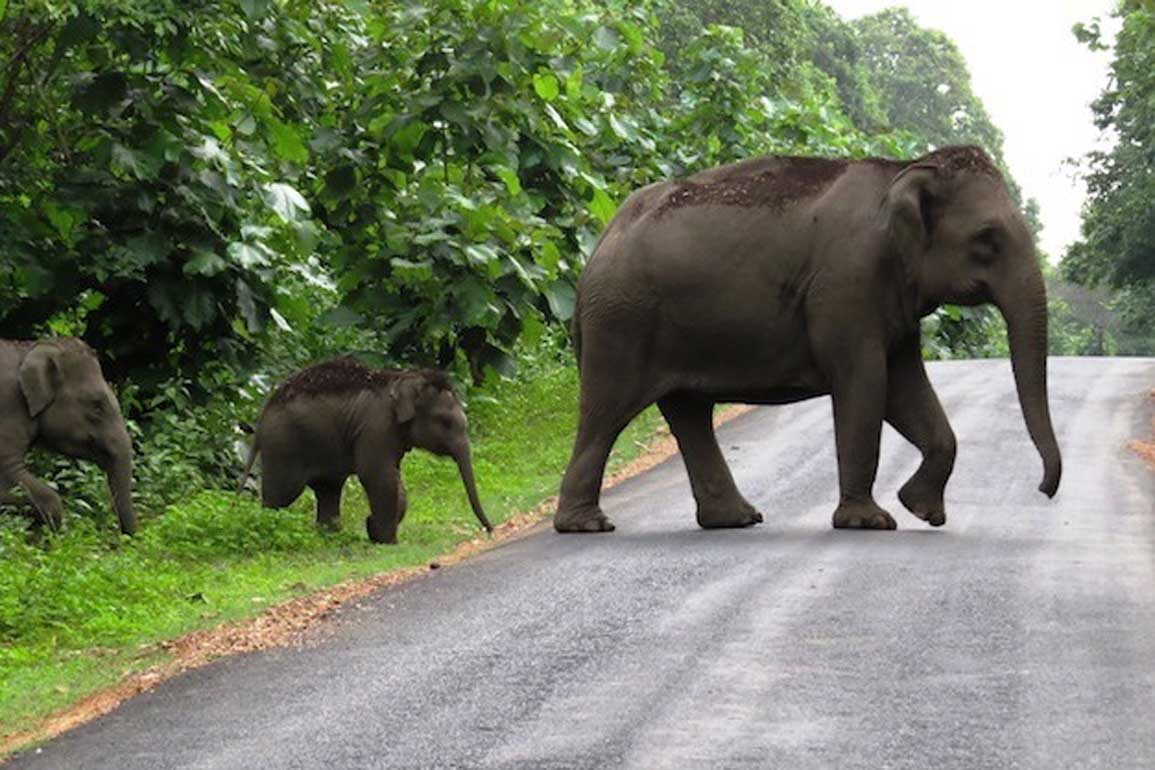The death of a pregnant elephant in Palakkad district has shaken the nation’s conscience, leading to an outpouring of public outrage at the way humans treat wild animals when seen as a threat to their food crops. While it is still debated whether the elephant was fed with a fruit stuffed with explosives or it actually fell victim to a snare meant for wild boars, the whole episode is the latest in a series of man-animal conflict raging on for years in the buffer zones.
As the habitat for wildlife is shrinking due to rapid urbanisation and animal populations such as leopards and elephants rising, many buffer zones in the state become a hotspot for encounters between humans and animals, especially between farmers and elephants that stray into the human habitat in search of greener pastures during summer.
In Kerala, a pachyderm moving into human settlement during summer for food or water is a regular feature. Last year, a tusker strolled out of the forest in Nilambur, plucked jackfruits from a tree in front of a house before walking back to the jungle, leaving a trail of destruction. A recent video of an elephant walking down one of the streets in Wayanad district, which was circulated widely on social media, speaks of how easily they cross over to human habitat.
“It has been a recurring theme. People have suffered a lot in the form of crop loss, as wild animals break the fence and launch raids on the farms that have sprung up on the human territories. There hasn’t been a fool-proof system in place to keep the wild animal at bay,” says M Noushad, a farmer from Nilambur, Malappuram district.
While rich agriculture lands in the buffer zones with high concentrations of nutritious foods are tantalizing enough for wild animals, the electric fences, snares and other methods used to scare them off – some of them are set up illegally – turn a death trap for the straying animals as was seen in the case of the cow elephant that ate a pineapple on a booby trap.
After the fruit bomb went off in its mouth, the seriously injured elephant spent its remaining days in excruciating pain, without eating anything for over two weeks. The explosion had crushed her upper and lower jaws and tongue.
Nearly seven months ago, an elephant carcass was found in farmland at Kurichiad in Kozhikode district. The post-mortem examination of the carcass revealed that the animal was electrocuted after it came in contact with an illegal electric fence built around a plantation to scare off the wild animals.
Tension boils almost every day in the zones when wild elephants, boars, deer and monkeys come into contact with the farmers to feed on various crops they can find on local cultivated farmland. While it is reasonably easy to chase out the smaller animals, stopping the marauding elephants without harming them is no easy job for farmers.
“There is no particular solution that would fit in all locations and situations. The reasons behind the conflict have to be studied separately for each and every location,” says the Vilangad forest range officer, adding nothing could work against elephants because they overcome any obstacle that comes in their way. Though it is illegal, farmers use cruel methods to ward off the elephants to protect their farmland because the monetary loss through crop damage will be too heavy for them to bear.
“What we need is more manpower to keep a watch over straying elephants. At least 30 watchmen are required to man every vulnerable section where mostly elephants try to cross and invade human territories. They should work as a gang and drive away elephants by bursting crackers. Building fences or walls could not work against elephants,” he says.
In the absence of effective prevention mechanisms, farmers have been watching over their fields at night, attempting to scare off the animals by shouting and banging empty cans, their effort often seeing no intended result. The distraught residents say they have repeatedly raised the issue with the officers, but haven’t been offered a definite solution to the problem. Many complain that it is nearly impossible to chase out elephants which even destroy big crops like coconut trees.
“They are the most difficult to stop. If they come to our field we know they will wreck the maximum damage to the crop. If at all there is anything that could be used against them, then it is bursting crackers to scare them. But even that does not work at times,” says Manu George, a local resident.
There are two main reasons for the rise in so-called human-animal conflict. One of them is the onset of summer when water dries up in the forest. The other reason is the growing encroachment of humans onto the animal habitat. “While the former is almost impossible to manage, the latter could be given serious attention,” says Mannarkkad Forest Range Officer Ashique Ali.







